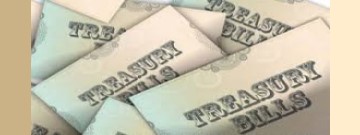
Treasury Bills, often referred to as T-Bills, are short term debt (1yr or less) backed by the US government. These are zero-coupon bonds sold at a discount to par value in order to create a positive yield to maturity. They are often sold in denominations of $1,000. These securities are widely seen as extremely low risk and safe investments due to backing by the treasury and are at the opposite end of the risk spectrum to junk bonds.
Extensive T-Bill information is available on the U.S. Department of the Treasury website along with long term bond information and yield curve data.
Example T-Bill Yield Calculation
In the following example, a $1,000 bill might cost an investor $975 to buy the bond. If this is redeemable in 6 months time the annualized return would be
( 1 + ( 1000 / 975 )) ^ 2 – 1 = 5.19%
As there is no coupon on this type of bond the return yield comes from the size of the initial discount paid to acquire the bond.
T-Bills and Merger Arbitrage
The T-Bill rate is important in the calculation of merger arbitrage investing. When judging the level of return, the trader should be aware of what kind of risk free return is available. From here, the trader is able to gauge how much they are being compensated for taking a certain degree of risk. The T-bill rate, which of course is not a static rate, should also be used when calculating historical rates of return.
NOTE: popular journalism rarely mentions the risk free rate when discussing the historical returns of investment strategies – especially merger arbitrage. This can significantly skew the figures and not represent accurately the risk / reward profile of the investment strategy. For example, a deal with a 100% DCP may still trade at a discount to the offer price depending on the time to expected completion date and the interest rate or T-bill rate used in the profitability calculation.
